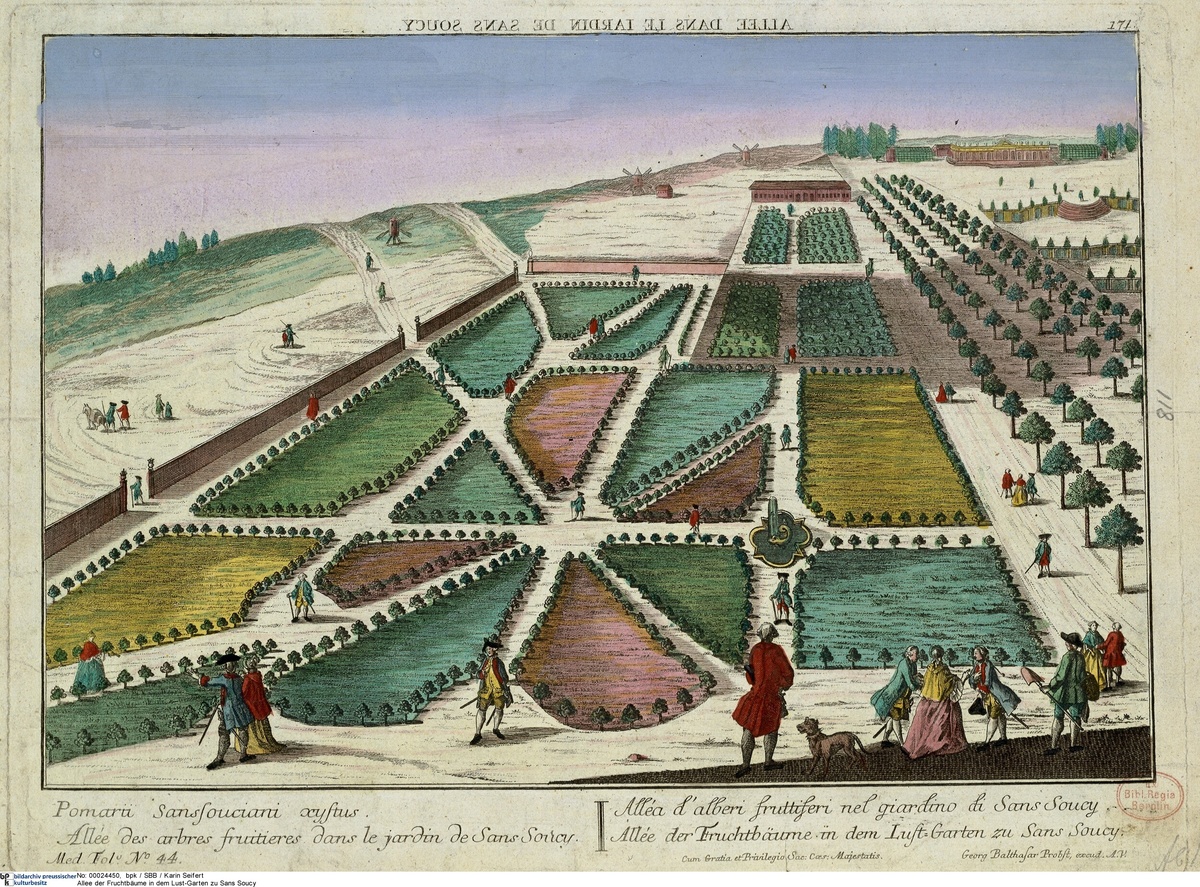Abstract
Sanssouci Palace in Potsdam near Berlin is an outstanding example of
Rococo architecture. It was commissioned by Frederick II (“the Great”)
(r. 1740-86) and built between 1745 and 1747. Its name means “without
worries,” and it served as Frederick’s favorite summer retreat. The
grounds include large English parks and gardens in the Italian-French
style. The symmetrical orchards and avenues shown here attest to
Frederick’s interest in agriculture. During his reign, he promoted
improvements in arable farming, initiated land-drainage projects,
encouraged potato cultivation, developed an extensive silk industry
(based on mulberry tree plantations), and supported improved methods of
fruit production.
